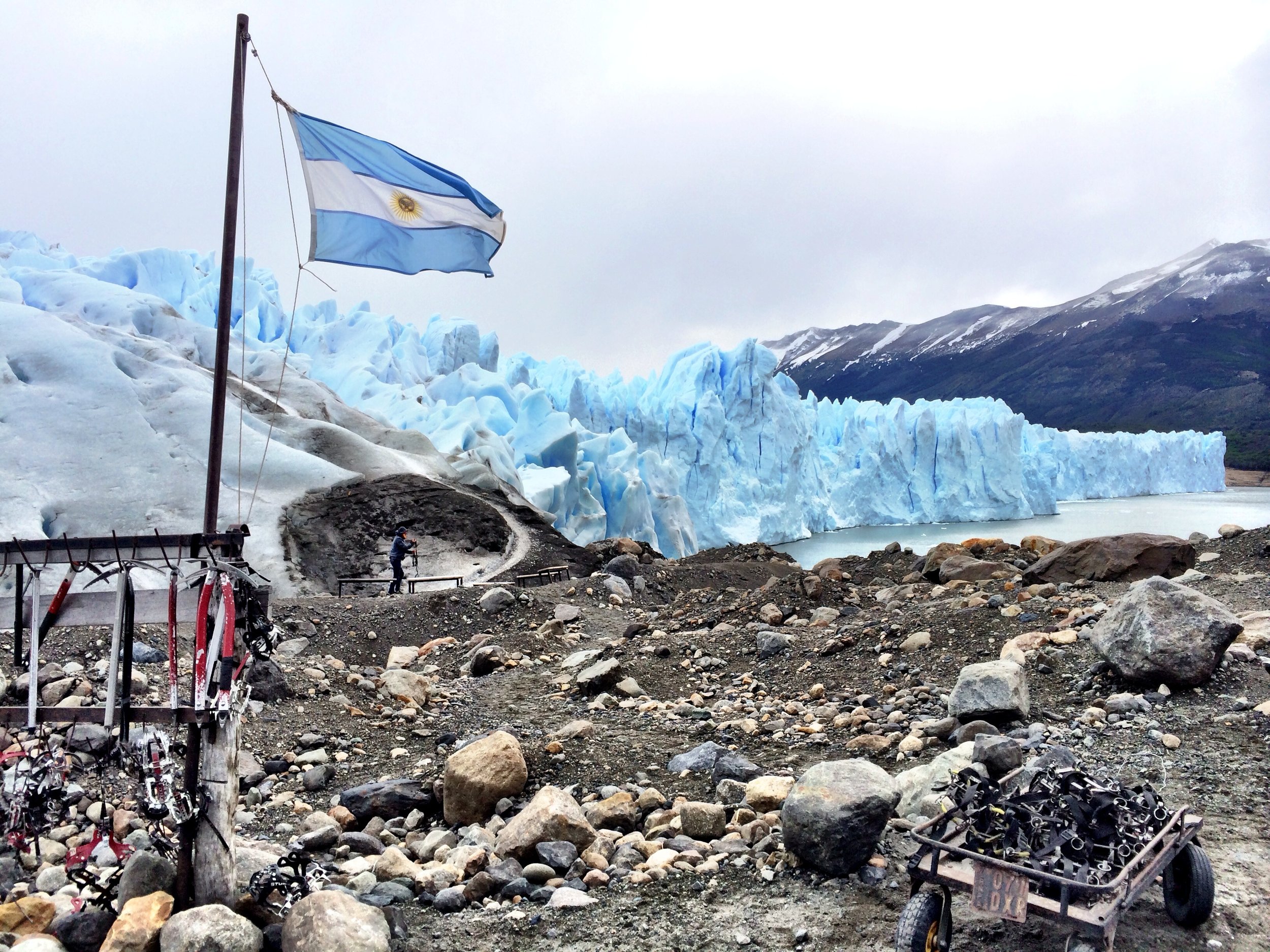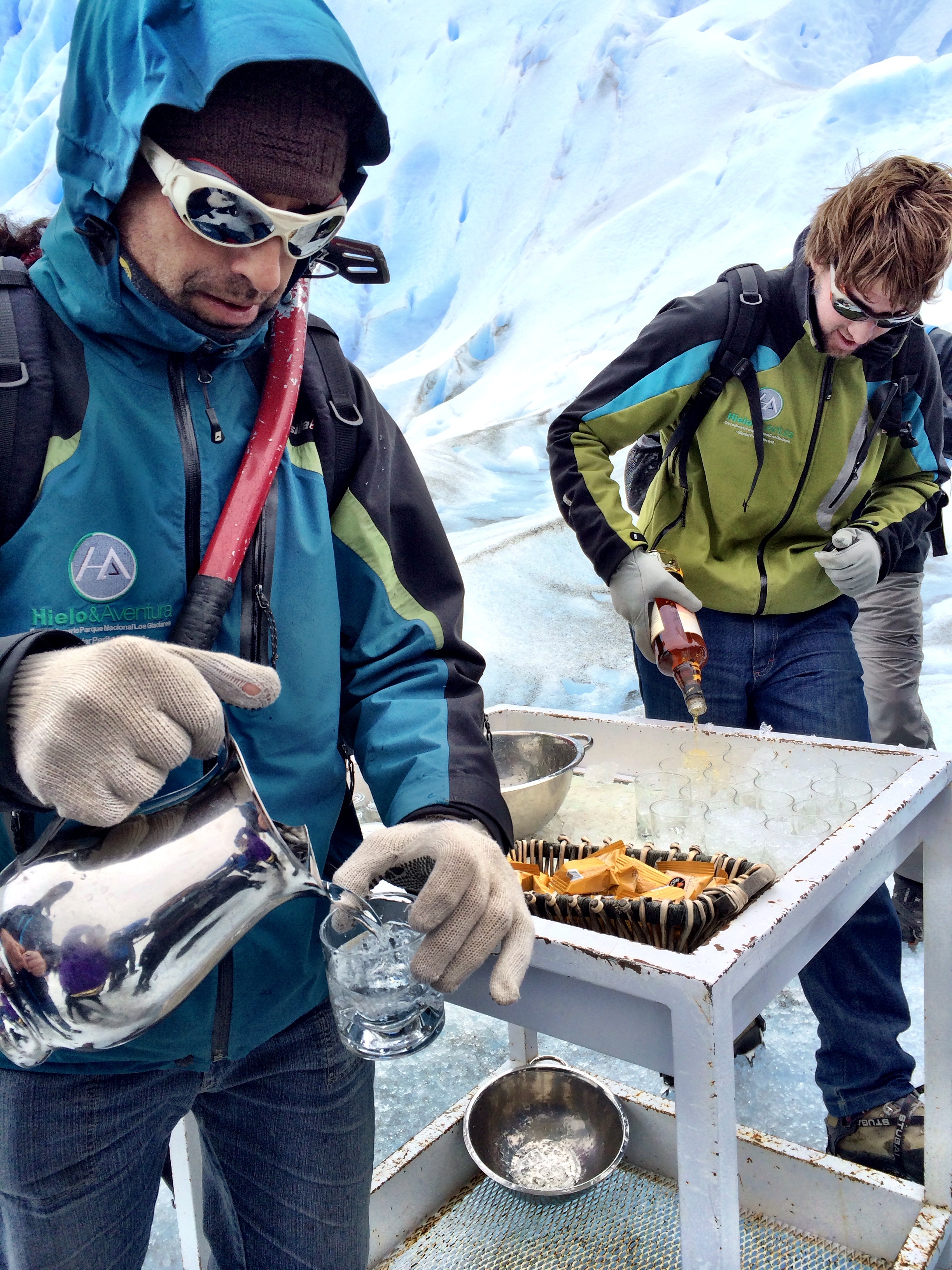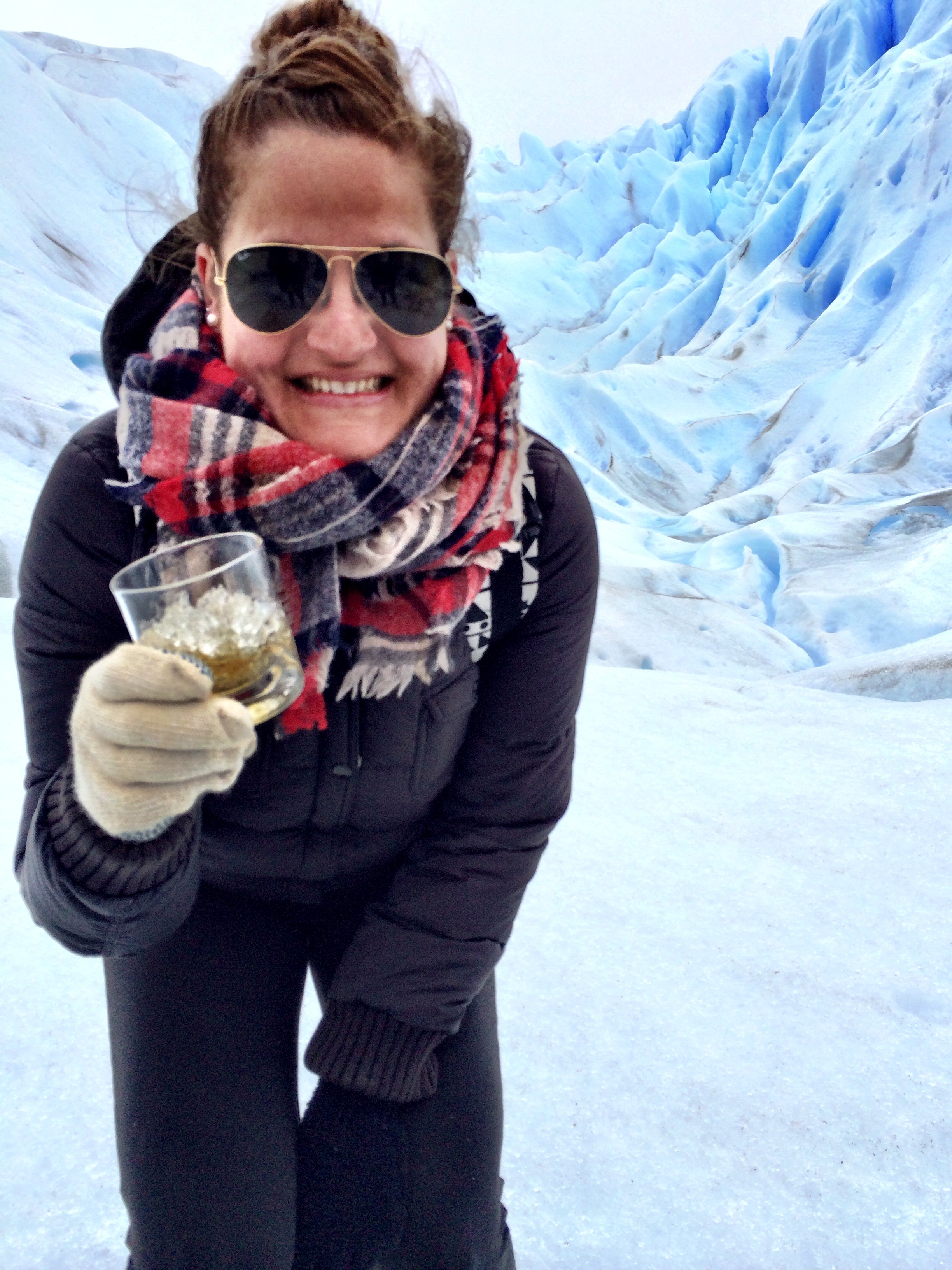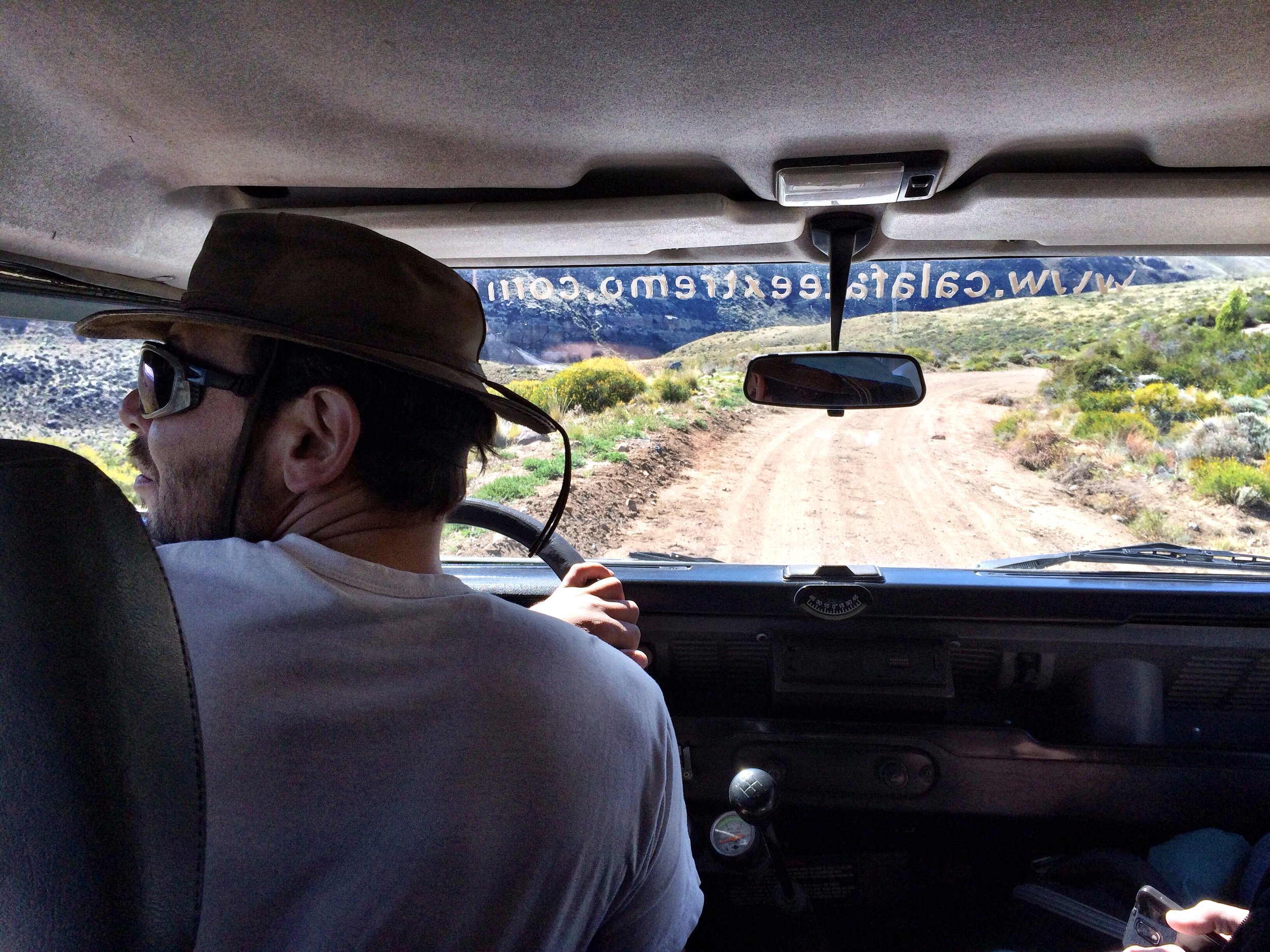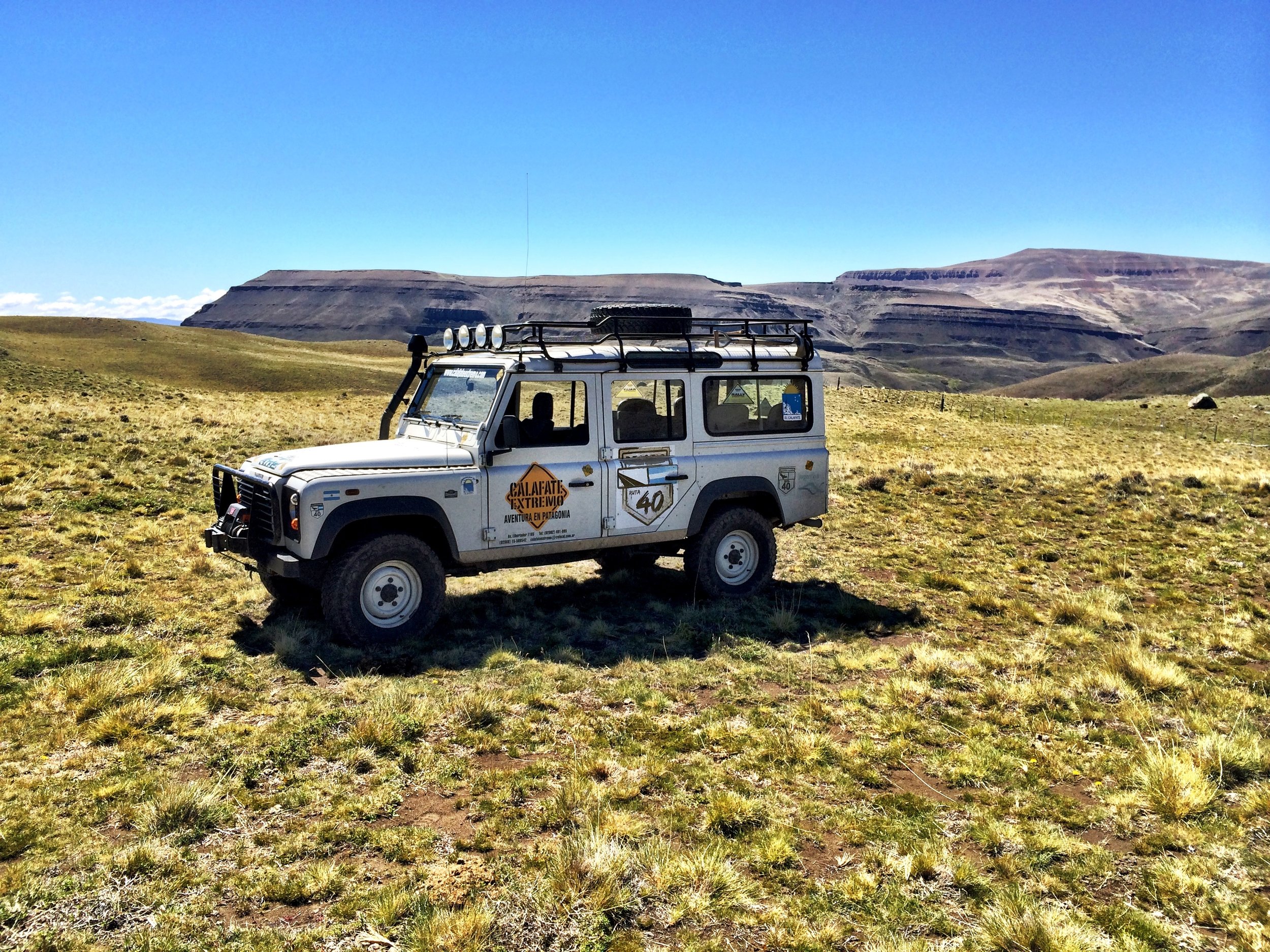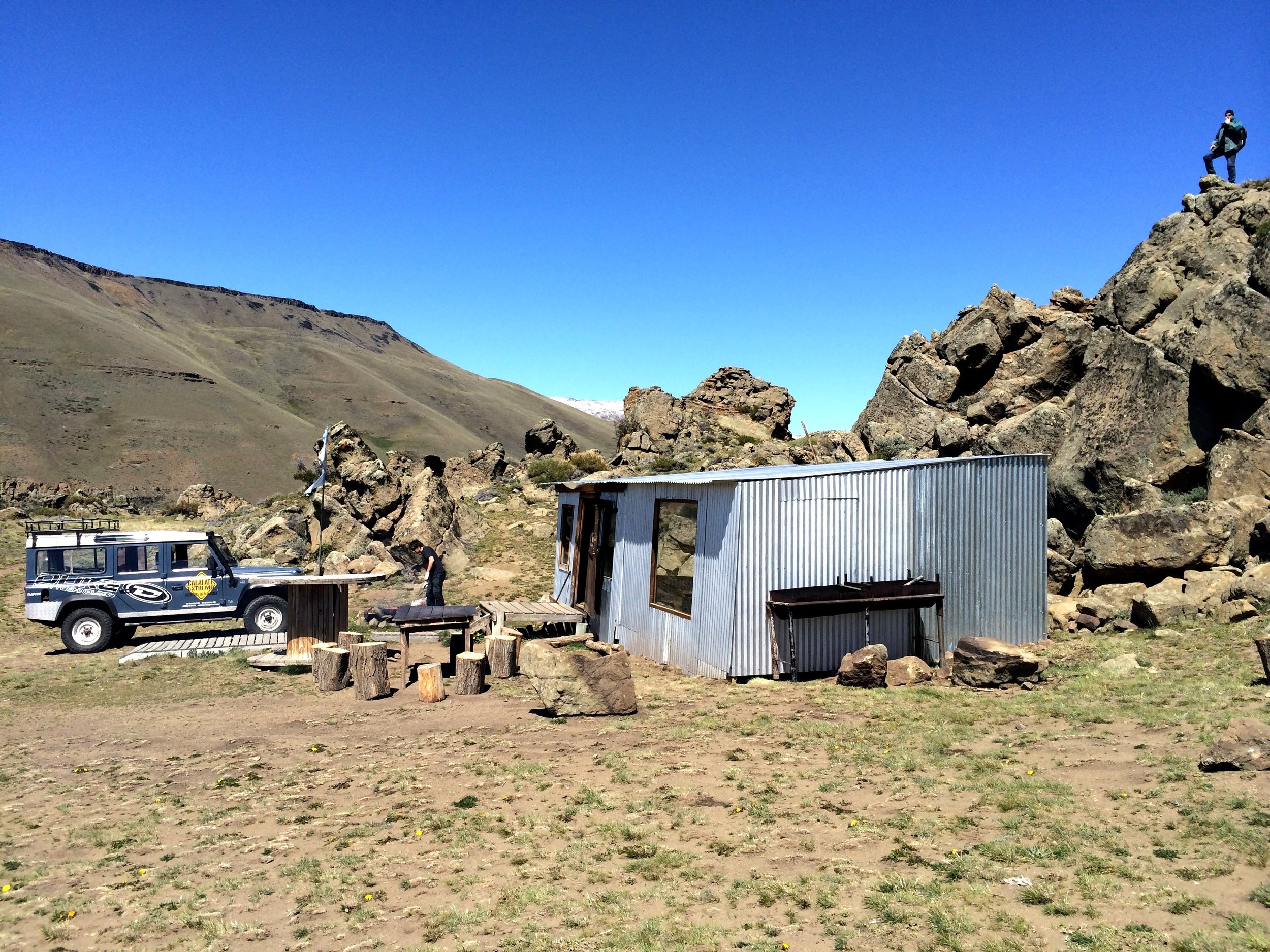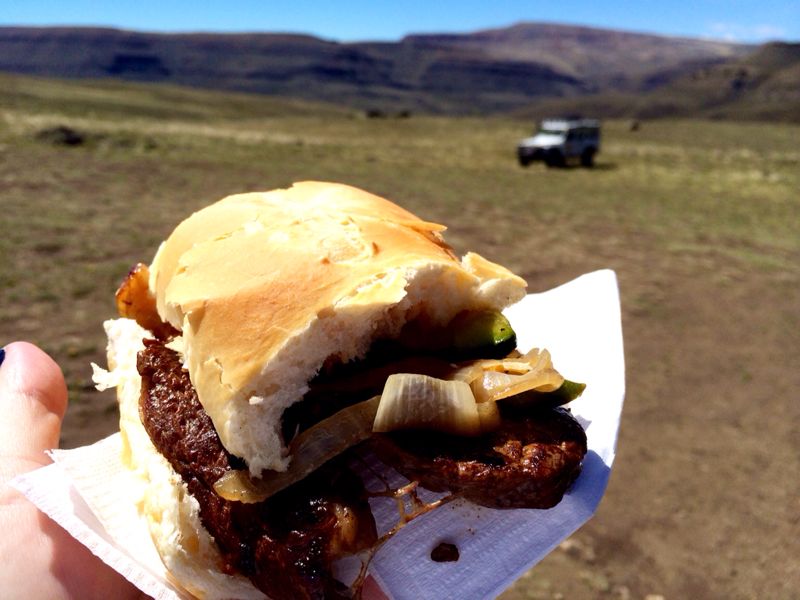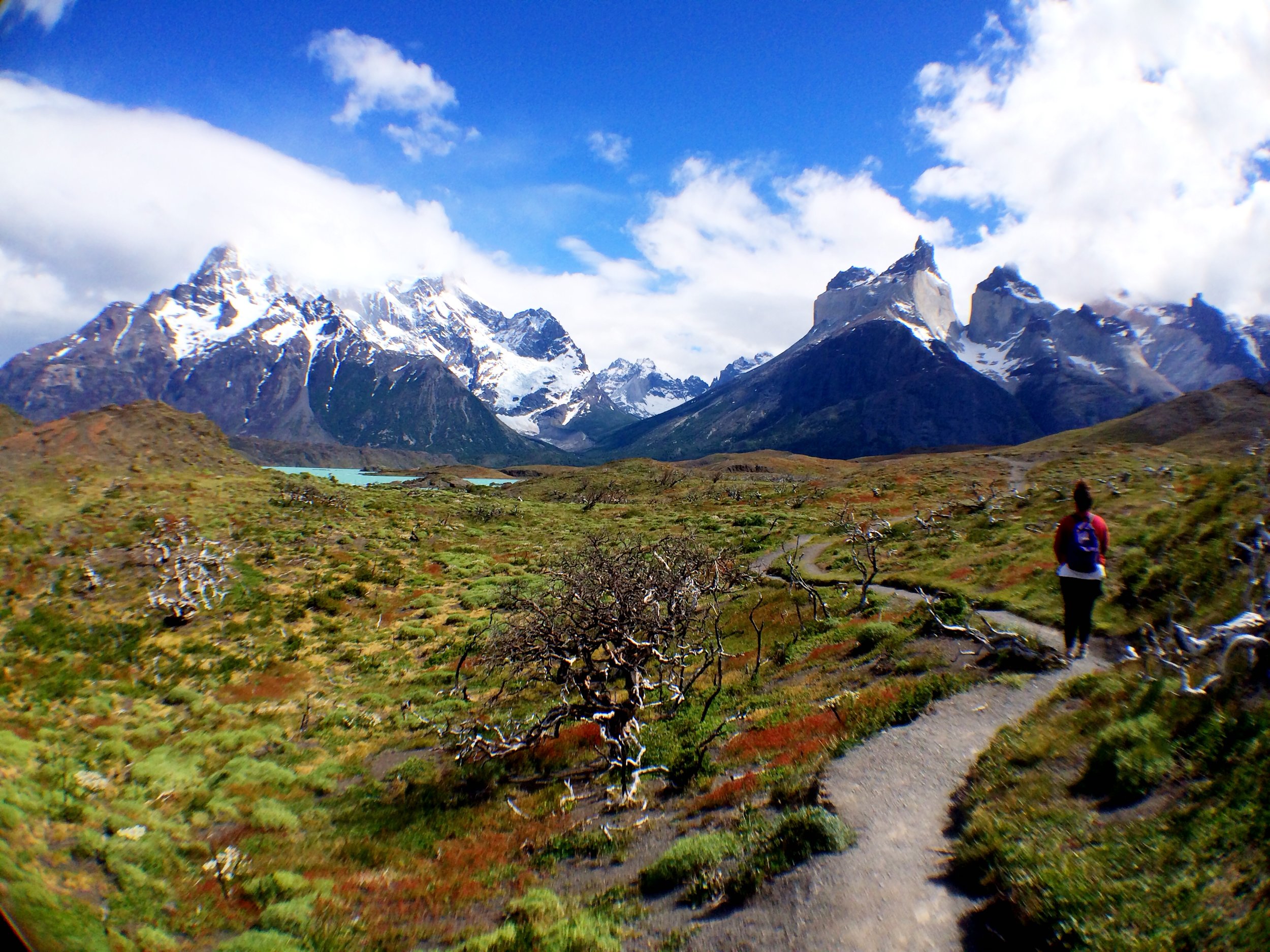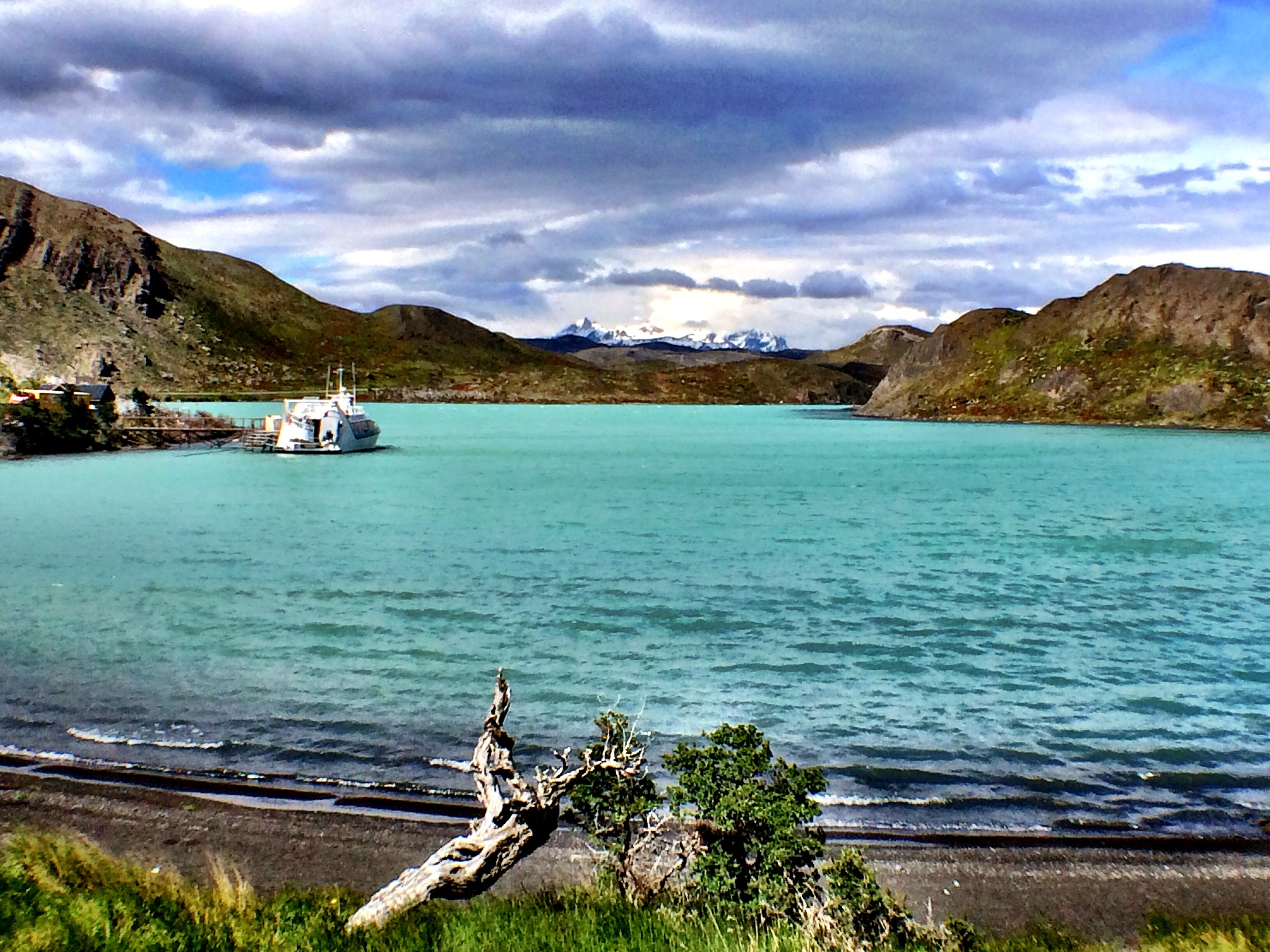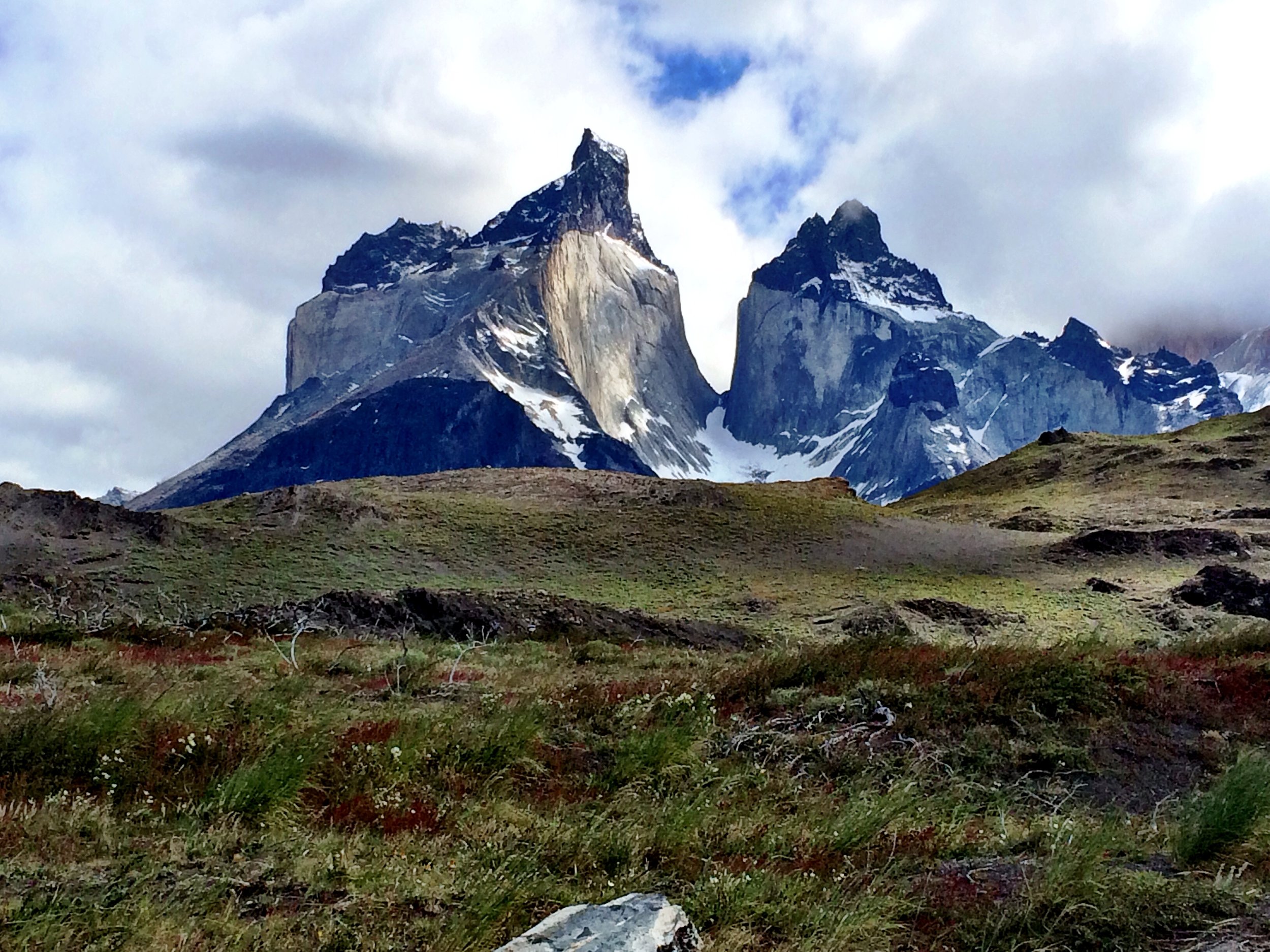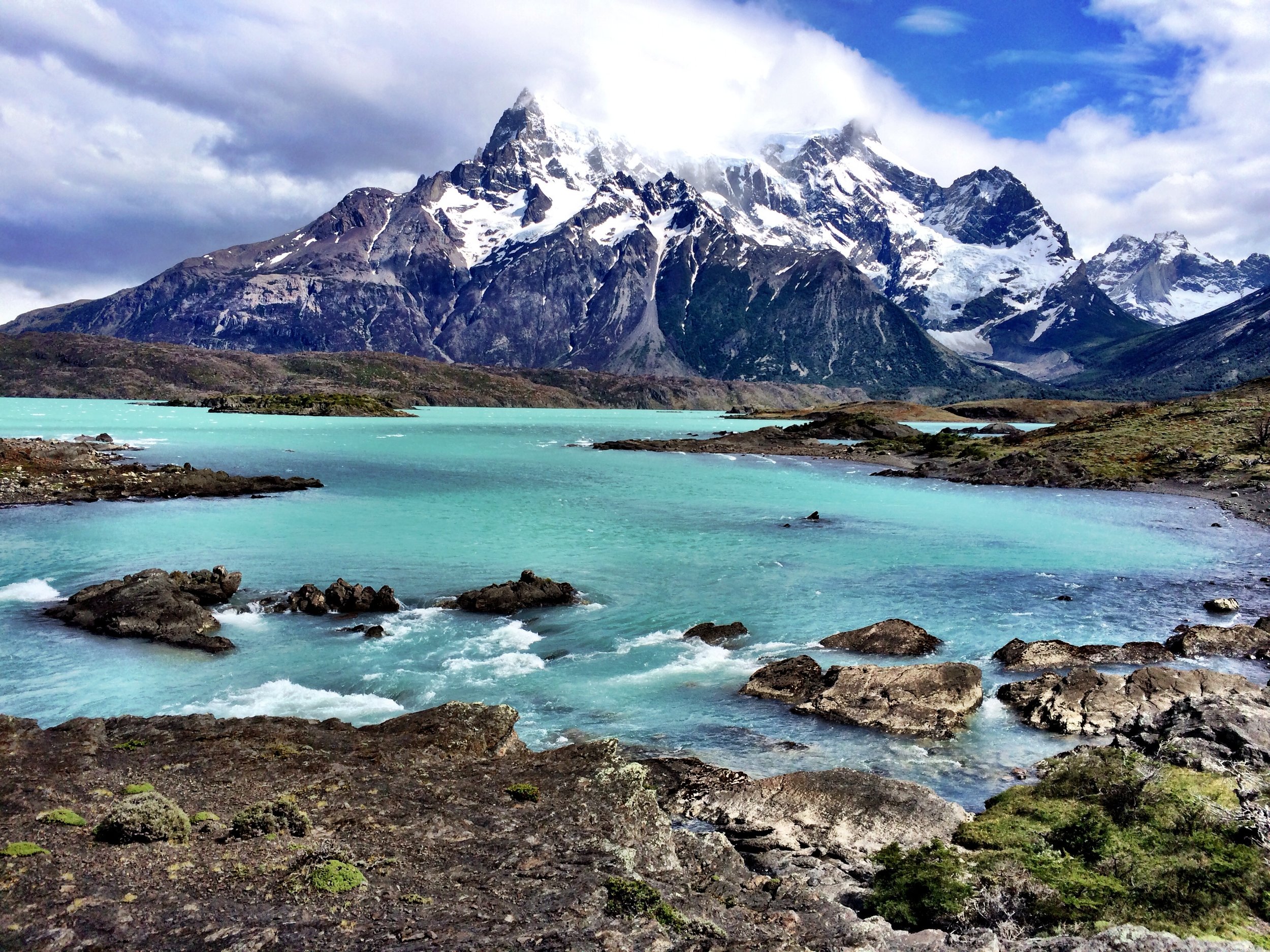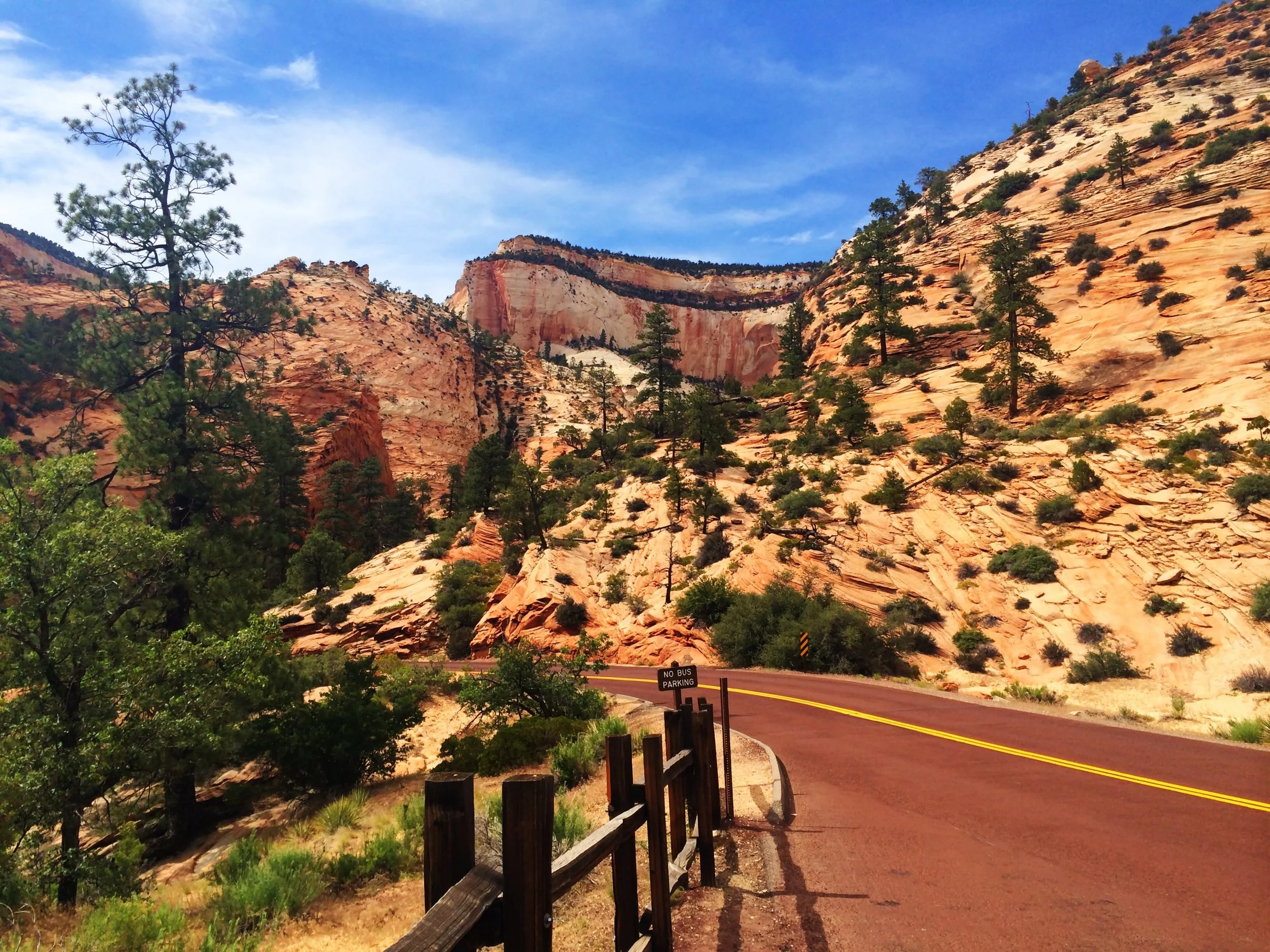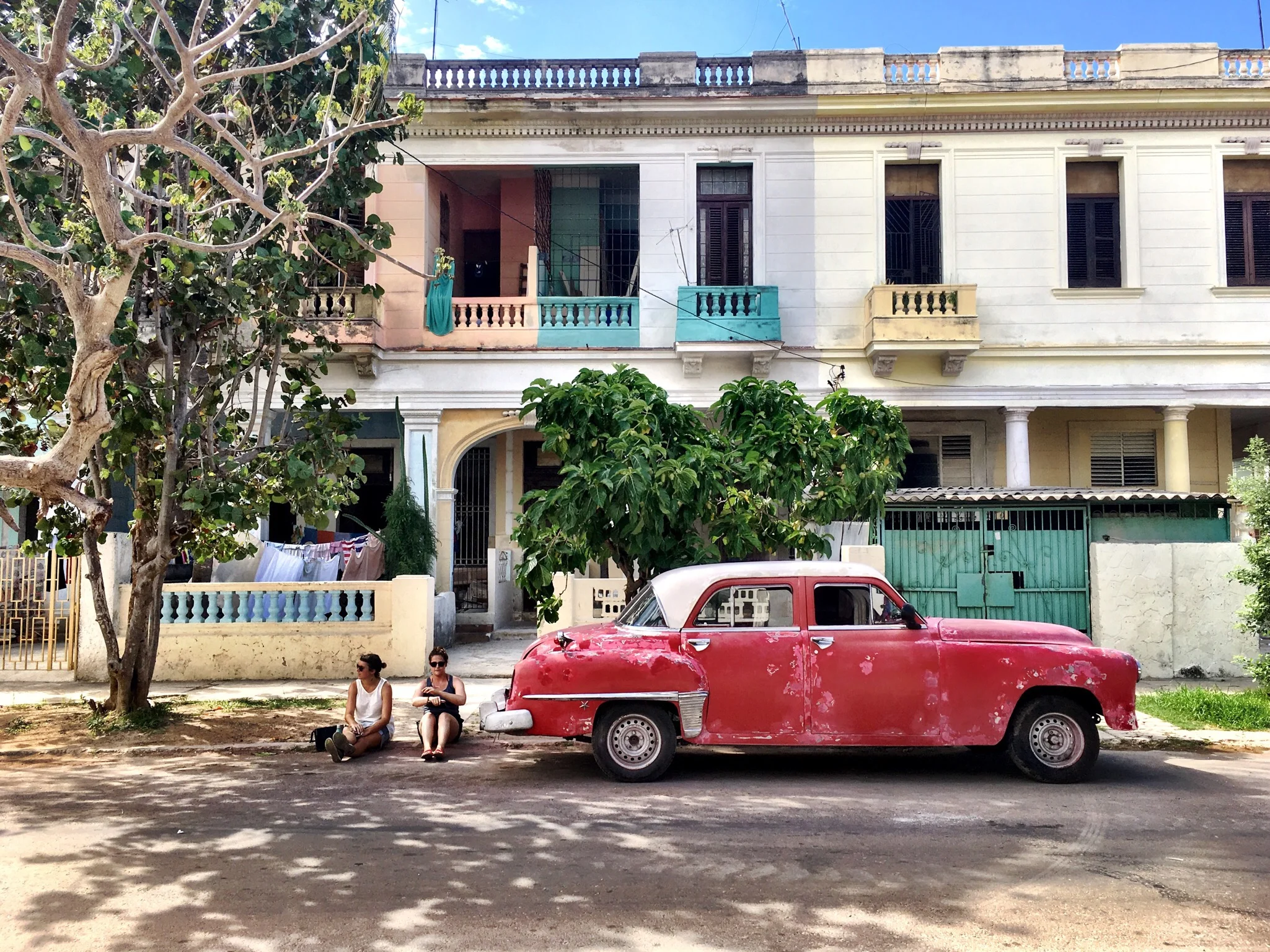Patagonia | November 2013
IN FLIGHT
Travel time: 15 hours, 45 minutes (LIM to EZE to FTE // FTE to AEP to EZE to LIM)
Miles covered: 6,470 (roundtrip)
Movies consumed: forgettable
Hours slept: forgettable
POST FLIGHT
Travel time: 7 days
Countries visited: two (Argentina and Chile)
Horseshoes found: one, luckily
Horseshoes forfeited at security checkpoint: almost one, unluckily
Guanacos spotted: lost count
Currency: ARS (Argentine Peso), 1 USD = 14.60 ARS, as of 2016 // CLP (Chilean Peso), 1 USD = 704.50 CLP, as of 2016
Interlude:
Back in 2012, my first association with Patagonia was the outdoor clothing company. Like a poser, I wore the fleeces while braving the chilly San Francisco summers, but I knew nothing about the man behind the company, his story and mission.
The documentary 180° South, filmed in 2007 and released in 2010, follows a surfer dude as he retraces the epic 1968 journey of his heroes Yvon Chouinard (the founder of Patagonia) and Doug Tompkins (the co-founder of North Face who recently died during a kayaking accident in Chile) to Patagonia. Chouinard and Tompkins each began their companies and empires out of necessity. They were interested in making the gear required for their mountaineering lifestyles. They were less interested in consumerism and turning a profit, shutting down their shops when a big swell came in. In the film, Jeff Johnson meets up in a rainy hut with Chouinard and Tompkins who, once driven purely by a love of climbing and surfing, now value above all the experience of raw nature – and have come to Patagonia to spend their fortunes to protect it. The documentary is particularly focused on Tompkins’ devotion to ecology and conservation in Chile. He retrospectively becomes the tragic hero of this story given the fate that would befall him the following year. As it has for countless others before and since, the region of Patagonia exercised its mythical pull, and I knew I had to see it for myself.
Chapter Six:
Now where were we? After five incredible days in the Peruvian Andes, we arrive in El Calafate, Argentina, no worse for wear. The airport (Comandante Armando Tola International Airport) is sleek and streamlined, a stone’s throw from the icy blue waters of Lago Argentino, and about twenty kilometers east of the city. We began with a three-day/two-night tour of Argentinian Patagonia. The booking included airport transfers, hostel accommodations, some meals, and transportation to/from/around Los Glaciares and Torres del Paine National Parks. Say Hueque worked with us to create a personalized itinerary suited to our geographical, financial, and time constraints. Other than the glacier mini-trek optionally added to our itinerary, our days in Calafate were ours to do as we wished. Upon our arrival, Say Hueque dropped us at Calafate Hostel, just a few short blocks from the downtown area. For the next two days (and a third after a brief Chilean excursion), Calafate would be our home base, serving as both a hub for day tours and a destination in itself. Our hostel featured a private double room with private bathroom. The lodgings also offered a cozy communal space, internet cafe, and solid restaurant.
El Calafate is very quaint. It has the feel of a ski village – souvenir and gear shops, outdoor fireplaces, casino – without the slopes. That afternoon, we walked on a path adjacent to the Laguna Nimez Reserve. A must-see for birders, the nature preserve is home to at least 70 species, and just a short walk from our homebase. In the winter, the edges of the lake freeze, creating a natural ice skating rink. During the summer, if you are lucky, you might witness a flamboyance of flamingos congregating in the waters of Lago Argentino.
On the main strip, Av. del Libertador Gral. San Martín, every other shop sells candy, chocolate or ice cream. My personal favorite, Ovejitas de la Patagonia, featured specialty chocolates (some with white chocolate layered into miniature sheep molds) and ice cream worth screaming over.
A self-proclaimed bibliophile, I had to pay a visit to Borges y Alvarez Libro-Bar also on Libertador. The decor is kitschy (and apparently the food unimpressive), but the book-lined walls and great patio make for an enjoyable happy hour. This far south, just 800 meters north of Tierra del Fuego, you really notice the “midnight” sun. It remained light until nearly 10:30 p.m., giving us permission to day drink well into the night.
Chapter Seven:
Don’t let the seasonal assignation of summer fool you, it is still quite brisk in November. Pack for winter and hope for the best. The hostel offered complimentary breakfast each morning, consisting of cereal and milk, biscuits and jam, and coffee, tea and juice. Due to its size and accessibility, the Perito Moreno Glacier is one of the major tourist attractions in southern Patagonia. It is less than two hours by bus from El Calafate. Through our Say Hueque booking, we added the glacier mini-trek. We are shuttled from hostel to the glacier. The Los Glaciares National Park entrance fee ($25 USD) is not included, and must be paid in Argentinian pesos. From August to May, the weather is forgiving enough and the ice unforgiving enough that you are permitted to hike directly on the glacier. We are ferried across Lago Argentino to a thin, rocky beach. There is a small way-station with information about the glacier and cubbies to stow personal items. Our sneakers are fitted with crampons. We are briefed on safety protocol and provided with at least one glove to protect our hand, not from the elements but rather the ice, which can be very sharp.
From this beach, we walk directly onto the glacier. We are carefully guided on an exploration of just a fraction of the ice formation’s surface, which occupies ninety-seven square miles in total. It is so massive: one of only three Patagonian glaciers that is growing. At one point, our guides seamlessly transition into bartenders, shaving ice from the glacier, pouring whiskey on the rocks. There’s also fresh water for you teetotalers.
The ice is impossibly blue. You stare into the deep crevasses that seem to glow an electric blue. There is a warmth in the glow. You could imagine a worst case scenario wherein you slowly drift to sleep in its chilly embrace. The 100-minute trek was over as quick as it began. So it goes. If you have the time and resources, I recommend the longer “big ice” trek. I would have liked to explore that glacier all day, or at least for three to five hours.
And that’s just the tip of the iceberg. After the mini trek, we re-board the ferry to get another perspective, take advantage of the vantagepoint from the lake’s surface. You see the south side, towering an average of 240 feet above the lake. Occasionally, you hear the crack of ice splitting, shifting, breaking off, as the glacier advances. A living breathing thing. Heard but not seen, until one large chunk calves, crashing into the lake below. Across the lake, we disembark and reconvene with our bus. A visitor center at the site features a walking circuit that allows visitors to view the southern flank and the east facing edge of the glacier. From this lookout, it seems impossible to traverse.
It starts to rain, so we snap a few photos then peruse the gift shop shelves and warm up with chocolate caliente in the cafe. It rained during the second half of our tour, but it appeared to have been a nice day in Calafate. That evening, we ate Hawaiian pizza at Casablanca, and returned to our temporary home under the never setting sun, with the feral dogs of Calafate tracking us and our leftovers the entire way.
Your mileage may vary regarding the human impact on the environment, but it would be irresponsible of me not to mention the effect of climate change on Patagonia and its magnificent glaciers. For some time, despite global warming, Perito Moreno was inexplicably growing, taking on ice while the rest of South America’s glaciers were shedding. Scientists have posited various theories regarding this phenomenon, but are in agreement that overall Patagonia is still losing huge amounts of ice. In fact, the glaciers in Patagonia are receding at a faster rate than anywhere else in the world.
The other notable city in Los Glaciares National Park is El Chaltén, Argentina. 220 kilometers north of El Calafate and situated at the base of Cerro Torre and Cerro Fitz Roy mountains, it is Argentina’s self-proclaimed trekking capital. In fact, Monte Fitz Roy is the basis for the Patagonia clothing logo following Chouinard’s ascent in 1968.
Chapter Eight:
Today is a free day in El Calafate. We decided to take an off-road 4×4 Jeep tour of the Patagonian high desert balcony with Calafate Extremo. For me, a day abroad is usually an exercise in meal planning: squeezing in tours and museums between restaurants and food carts, always knowing when and where my next meal is coming from. True to form, we booked with this particular tour company based solely on TripAdvisor reviews praising the inclusive lunch. To this day, I endlessly torment my sister/travel agent, who, upon reading favorable things about the lunch provided by one particular tour, inquired as to the lunch provisions at each and every 4×4 tour company on Libertador. But that doesn’t mean it wasn’t the best sandwich I ever ate. After driving around for a couple hours, enjoying the views, we met up with other small groups, and our guides sautéed organic, free-range, grass-fed lamb, onions, peppers, all piled high on a fresh french roll. Dixie cups of local red wine were passed. We devoured the provisions sitting on tree stumps outside a little shack in the middle of nowhere. A pack of misfit Anthony Bourdains.
Now I hate to be the bearer of bad news. And, given what I know now, I debated even telling you about the lamb sandwich. But it was such an integral part of my Calafate experience that I couldn’t leave it out, despite the heartbreak I felt upon learning that Calafate Extremo appears to no longer be operating, despite the heartbreak I feel sharing that information now. Should you find yourself in Calafate, I pray that I (along with the world wide web) am mistaken. I implore you to find the company formerly known as Calafate Extremo, to make further inquiries at each and every tour company you pass.
Still sated from lunch, we obviously planned our next meal. Pura Vida had great reviews, healthy homemade options, and limited business hours. We finally found it on the far side of town, its lights off and doors closed. Impatient and uninspired, we settled for dinner at our hostel, which was surprisingly delicious. We gorged on grilled steak and fries, gnocchi with alfredo sauce, and a loaf of fresh-baked bread, still piping hot and nearly the size of my head.
Chapter Nine:
Early this morning we checked out of our hostel, and were promptly picked up by a South Road truck for an excursion to Torres del Paine (pronounced pie-nay) National Park in Southern Chilean Patagonia. Torres del Paine (Spanish for Towers of Paine, “paine” being the indigenous word for the color blue) is so named for its three iconic granite towers that loom large in the backdrop. Make sure to bring your passport. You will need to present it at the Argentina/Chile border. You cannot bring fruit or vegetables across the border, so use the long bus ride to get those daily servings of fruit. Argentina and Chile do not require visas for stays less than 90 days. However, citizens from the United States, Australia, and Canada visiting Argentina must pay a reciprocity fee of $160 USD and will have to present the payment receipt at immigration control when entering the country from Chile during the return trip. The fee is valid for 10 years from the date of payment and for multiple entries. It is advisable to keep multiple copies of the receipt, as it must be presented every time you enter Argentina. After the obligatory border crossing rest stop, we continue on to Sarmiento Lake and Laguna Amarga with its breathtaking views of the Torres, weather permitting.
As I mentioned, we were heading directly to TDP from Calafate. For some, the gateway to Torres del Paine is Puerto Natales, Chile. The town is a good place to stock up on supplies and prepare for the trek.
Our bus driver took us on tour of the park’s most notable sights, some of which are accessible on the periphery of the park before actually passing through the gates. I eat my bag lunch (another lamb sandwich, a close runner-up) on a little rock overlooking Cascada del Rio Paine, the Torres peaking through the clouds in the distance. We divide our time between busing to various lookout points and stretching our legs with short walks to others, like the rushing waters of Salto Grande.
The park entrance fee of 18,000 chilean pesos (about $38 USD) is discounted for Chilean nationals. In 2010, Torres del Paine was ravaged by an out of control campfire, the effects of which still haunt the park (as evidenced in the charcoal black trees showing no signs of new growth), but do not mar its overall beauty. Our preferred vantage point is Cuernos del Paine (Horns of Paine) as seen from Lake Pehoé. Other than the packs of guanacos (in the llama family), we did not spot much wildlife – until, at one point, I was overwhelmed by all the beauty, and wild horses nearly dragged me away.
For some passengers, this excursion was a day tour, returning to Calafate that evening. We, however, were dropped at the park entrance (Amarga gate) and transferred to another vehicle that would deliver us to our accommodations for the next two nights. Or close enough. We wound up in a van driving some guests of a certain age and a certain means to the beautiful Hotel Las Torres. For one quick second, I lent myself over to the fantasy that I, too, had a room at the inn. Instead, we trekked down the road to Refugio Torre Central. You will need to make reservations in advance. This particular refugio, which houses sixty people in ten coed dormitories each with three sets of bunk beds, was completely sold out during our stay. Each bed (“made up bed” indicates blanket and sheets provided) has accompanying storage bin that locks as long as you remember your padlock. There is another building with additional dorms and campsites also onsite. In November, the refugio network – comprised of several refugios, cabins, campsites, and dome-shaped yurts – is almost solely operated by teenagers on summer vacation. Torre Central has shared restrooms with private showers, lounge areas, a dining room, bar, and shop. My favorite refuge in the refugio featured a wood burning stove, cozy hammock, and the most incredible view of the Torres through its floor to ceiling windows. Breakfast, lunch (or box lunch if you’re planning to be gone for the day), and dinner are optional and cost extra. Torre Central accepted credit cards, but sometimes the connection was down. Incidentally, our drinks and snacks were on the house one night, but I would recommend having extra cash on hand to cover food and board. Meanwhile, Hotel Las Torres is a good resource for park tours and transportation. It also grants non-guests access to a comfortable lobby, (untested and expensive) restaurant, spotty wifi, bike and bronco rentals, and nice restrooms.
Chapter Ten:
It is advisable to give yourself a couple extra days, not only to enjoy the sights, but also as a buffer against unexpected inclement weather. It is said that you can spend a week in Torres del Paine, at any time of the year, and end up seeing nothing, so unpredictable is its microclimate. In our case, particularly day one, visibility was as high as our hopes. Low season runs from September to December, March and April. The high season occurs during January and February. Services in and around the park, and tourism as a result, are reduced in the winter from May through August when weather becomes extreme and daylight dwindles to a couple hours a day. Nightly accommodations range from 35 to 305 pesos, depending on category, bedding, meal plans, and season. Campsites are significantly less expensive. Equipment rentals are available. Camping rentals also include use of restrooms and hot showers.
You will no doubt notice the different colors and textures of the granite formations. Glacial erosion is mainly responsible for the sculpting of the Paine massif (eastern spur of the Andes) in the last tens of thousands of years. The Cuernos’ central bands of exposed granite contrast strongly with the dark aspect of their tops, which are remnants of a heavily eroded sedimentary layer. In the case of the Torres, what once was their overlying sedimentary rock layer has been completely eroded away, leaving behind the more resistant granite.
Hikers can opt for a day trip to see the towers (summer’s long daylight maximizes outdoor hours); walk the popular “W” route in about five days; or trek the full circle in eight or nine days. The trails are clearly marked, and hikers are forbidden from straying off the beaten path. The “W” circuit, named for the shape of the route, is by far the most popular option. Hikers start and finish at either of the base points of the “W,” performing each of the four shoots as a day trip. The entire trek is 71 kilometers. The five points of the W, from west to east, are:
- Glacier Grey, a large glacier calving into a lake of the same name. Camping is available next to Refugio Grey.
- Refugio Pehoé, situated on Lago Pehoé. This site offers great views of the Cuernos or “horns” of Torres del Paine.
- Valle del Francés (“Frenchman’s Valley”), often rated as the best scenery in the whole park. The challenging path leads up into a snowy dead-end, where several small glaciers are visible.
- Hosteria las Torres, a large hotel at the base of the mountain range that I mentioned before.
- The Torres del Paine themselves, large rock formations over a small lake, high in the mountains. Base of the Towers is also a manageable day hike. After a three to four hour ascent through the Asencio river valley and “Lenga” forests you reach the base lookout point with an amazing view of the three towers and glacier lagoon. If you are interested in a day hike, you can stow any extra gear at Refugio Torre Central.
The longer full circuit walk includes all the sights of the “W,” but avoids most backtracking by connecting Glacier Grey and the Torres del Paine around the back of the mountain range.
This time around, the “W” circuit was not in the cards. We lacked the gear, know how, and endurance for such an endeavor. This was purely a reconnaissance mission, hedonistic and avoiding heavy lifting. We enjoyed a somewhat rainy day in the park, taking a short day hike, the beginning of which followed the Base of the Torres trail. There is a small kiosk, selling snacks and drinks, located at Hotel Las Torres at the beginning of the trek to Las Torres. Once more, we enjoyed the dinner and nightlife the refugio had to offer.
Chapter Eleven:
We have most of the day in TDP and, unfortunately, all of our luggage, namely carry-on sized backpacks and larger duffel bags. It was too much stuff and a hassle to travel with. I would suggest bringing just a backpack, and leaving larger bags in Calafate or Puerto Natales, if you have the luxury of a reliable hotel/hostel and return trip to pick them up. The only schedule we need to maintain is meeting our bus transfer at the main gate at 4:00 p.m. We are essentially boarding the return trip of the day tour we began two days prior.
There are three main bus stops in the Park: the Park entrance at Laguna Amarga; the Catamaran Dock at Pudeto; and the Conaf Administration Centre. From the Laguna Amarga main entrance, shuttles are available to the Las Torres sector and the terminus of the famous Base of Las Torres trek. There are also daily shuttles operating the reverse route. These shuttles seem to run only a couple times a day and become quite crowded. A wooden sign at the refugio posts the schedule. Boats and buses provide transport between Hosteria las Torres, Refugio Pehoé, and the park entrance at Laguna Amarga. If you entered the park in a different way and want just a one-way return ticket, board any bus with seats available, and pay the conductor directly. The price might vary from minute to minute or from driver to driver. 5,000 chilean pesos is a good place to start the negotiations.
We gather all our belongings and take the early shuttle to the park entrance, with the goal of finding our favorite lagoon from that first day. At Laguna Amarga gate, desperate and confused, we snag seats on a tour bus heading to the catamaran departure point at Lago Pehoé. The catamaran, operated by Hielos Patagónicos, connects Pudeto with Lodge Paine Grande. Tickets are not available for purchase in advance.
Day hikes to the Glacier Grey trail and backpackers taking the “W” or Circuit trails will need to cross Lago Pehoé at some point aboard a catamaran, about a 45-minute ride. The cost is $22 one-way or $36 round-trip. Buses from Puerto Natales are timed to drop off and pick up passengers in conjunction with the catamaran (November 15 to March 15 leaving Pudeto at 9:30 a.m., noon, and 6:00 p.m., and from Pehoé at 10:00 a.m., 12:30 p.m., and 6:30 p.m.; October 16-30 and March 16-30 from Pudeto at noon and 6:00 p.m., and Pehoé at 12:30 p.m. and 6:30 p.m.; October 1-15 and April, from Pudeto at noon, from Pehoé at 12:30 p.m.; closed May through September).
The winds have picked up along with our resolve. We stash our duffels at the small cafeteria/ticket booth, and set out retracing our steps, the reverse trip from two days ago. We know we are on the right track when we find Salto Grande. We somehow manage to find our favorite spot – the secluded beach with the Cuernos reflected in the crystal blue waters. We had every intention of dipping our toes, and perhaps more, in the lagoon, but it was too cold and windy and we couldn’t risk losing our lift back. The lakes are vividly colored, mostly due to rock flour or glacial flour suspended in their waters, making them appear milky.
In an abundance of caution, we returned to the Amarga entrance with hours to spare. There is not much there, other than a guard station and benches minimally covered by an overhang. There is not much to do, other than bundle up, keep from freezing, and wait for our ride. I couldn’t be wearing any more clothes.
At last, we board a bus back to El Calafate. After an eventful ride, marked by rain and sleet and snow, we once again check into Calafate Hostel. A bourgeois couple from our 4×4 tour earlier in the week recommended Casimiro Biguá, a steakhouse on the strip. Unforgettably displaying an entire rack of lamb roasting in the window, we had passed the restaurant many times and decided to splurge on our last night. The fried cheese appetizer was obviously amazing. What’s not to like? The lamb was tender and accompanied by an array of flavorful sauces. Don Pichon is also supposedly excellent. Visitors flock to Patagonia for the unparalleled beauty and ice formations, but they stay in Calafate for the ice cream and a little lamb. Vegans may go hungry.
Chapter Twelve:
We just have the morning in Calafate. I grab some souvenirs – mostly chocolates for my colleagues. We sample the empanada offerings of a local bakery. We try our damnedest to not ruin our final hours in this beautiful city by contracting rabies from these stray dogs that seem to follow us everywhere. We succeed in this regard. Say Hueque handles our airport transfer. The rest of the day is spent enroute. From Calafate to Buenos Aires to the other airport in Buenos Aires to Lima, finally arriving late that night. See Peru Chapter 13 for details.
Our itinerary had us switching airports in Buenos Aires. We had just over three hours to get from Jorge Newbery to Ezeiza International Airport. Equal to the task, we waited in the long, but quick taxi queue near baggage claim, and made the journey with time to spare. During the drive, I noticed an interesting trend in Buenos Aires, wherein groups of families and friends would picnic on the large stretches of lawn along the highway. They excitedly unpacked coolers and grills, futbols and boomboxes, setting up chairs, tables, and umbrellas in the enclosed circular fields of on and off ramps. I guess it was as good a place as any to enjoy a lazy afternoon.
The other funny thing about South America was airport security. Other than my discovered horseshoe being disallowed in my carry-on, we did not have any issues with security. However, I was endlessly amused by the clear plastic box of “weapons” confiscated at the checkpoint. Just who are these passengers that think they can travel with scissors, box cutters, X-Acto knives with replacement blades? I think I even spotted a power drill in there. Puzzled by this high stakes game of “I Spy,” I take comfort knowing that the security officers and metal detectors are working hard, not hardly working.
Memories are unreliable. They change with time and perspective. The good ones remain vivid and idealized, while the bad tend to lose their luster. Otherwise, we might never be doomed or blessed to repeat the past. As your unreliable narrator (with unpredictable mood swings), I will gloss over the more unflattering anecdotes of my travels. My meltdown at the Buenos Aires’ airport will remain a mystery.
Epilogue:
The empty pages of my travel journals and bare-bones blog may be misleading, but I have traveled fairly extensively prior to Patagonia and since. And I still believe, pound for pound, square mile for square mile, Torres del Paine is the most beautiful place I have ever seen. With its colors, scale, biodiversity, and grandeur, few places can compete. Now that I consider myself a trekker, in the least hardcore, most glamorous sense of the word, I am eager to return and attempt the “W” circuit. When I do, you will be the first to know.



